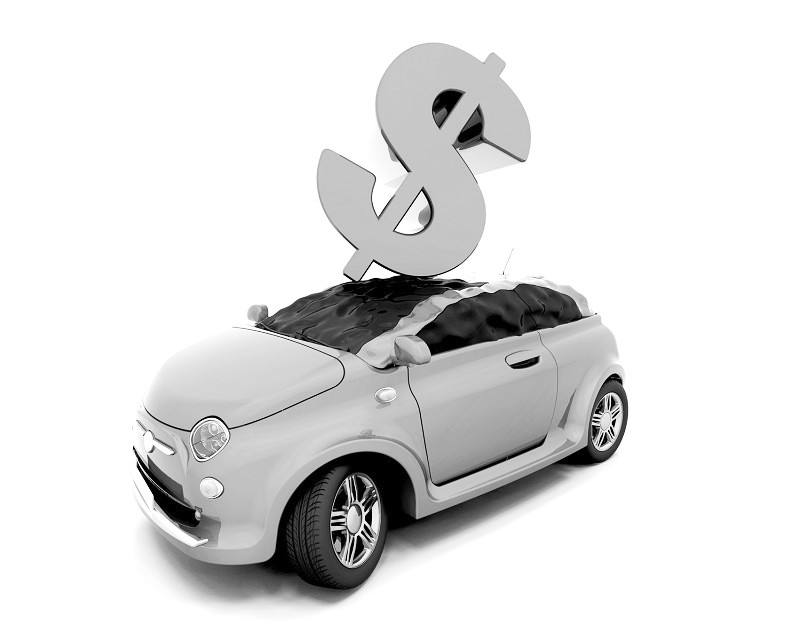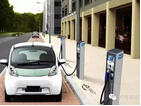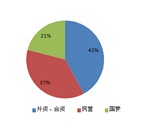Under the situation that the state encourages and supports the development of the new energy automobile industry, real estate developers have aimed at the cake of the new energy automobile industry, and have begun to cross-border layout with funds and resources. While the influx of real estate developers brings vitality to the new energy auto industry, it also faces many challenges and challenges.

New energy vehicles have strong momentum of development and potential
As the real estate industry enters the “silver era”, the profit growth rate of the real estate market slows down, and mainstream real estate developers have chosen diversified business development to seek new profit growth points. The new energy vehicle market, which has not yet fully started, is recognized by capital as the next big market with mega-scale market space, attracting the attention of many real estate developers, especially real estate predators.
Since the implementation of the “Ten Cities and Thousand Vehicles” project in 2009, the development of new energy automobile industry has been strongly supported by national policies. In the past ten years, China's new energy automobile industry has developed rapidly. According to the data of China Automobile Association, in 2017, the production and sales of new energy vehicles were close to 800,000 units, reaching 794,000 units and 777,000 units respectively, up 53.8% and 53.3% year-on-year respectively. The growth rate increased by 2.1 and 0.3 percentage points respectively. In 2017, the new energy vehicle market accounted for 2.7%, an increase of 0.9 percentage points over 2016.
The latest data show that from January to July this year, the production and sales of new energy vehicles were completed 504,000 and 496,000, respectively, an increase of 85% and 97.1% over the same period of the previous year. It can be seen that the development momentum of new energy vehicles is strong, and it is in the early stage of explosive growth. Most of the new powers that are emerging constantly have financial problems, which gives an opportunity for the development of large capital.
In 2015, "Made in China 2025" proposed "energy-saving and new energy vehicles" as a key development area. At the same time, the new energy automobile industry has been included in the national strategic emerging industry development plan. The "Technology Roadmap for Energy Saving and New Energy Vehicles" predicts that the number of new energy vehicles in China will reach 20 million in 2025.
Under the situation that the state encourages the development of the real economy, the new energy automobile industry, as a strategic emerging industry, is an industry that is encouraged and supported by nature, and naturally becomes the target of transformation of local manufacturers. Even if the government is constantly retreating, various localities are still introducing new energy vehicle industry support policies. The situation is good and the trend of developing new energy vehicles is growing.
Stimulate market vitality, accelerate competition and eliminate
From the early Wanda Investment Yinlong New Energy Company, to Huaxia Happiness to acquire Hezhong New Energy, Country Garden to Deploy New Energy Industry Chain, Baoneng to enter the Guanzhi, and now Evergrande shares in Faraday, Vantone to acquire Xingheng Power, etc. The entry of these large capitals will inevitably stimulate the vitality of the new energy vehicle market.
On the one hand, although the technology of some key components and the design of electric vehicle body structure and accessory components have been widely applied to new energy vehicles, these technologies are still not mature enough compared to the entire new energy automobile industry. There are still many technical bottlenecks. The core technology and the improvement of vehicles need to invest a lot of manpower and material resources. Enterprises need to have certain financial support. The influx of big capital brings capital and resources support to the upstream and downstream enterprises of the new energy automobile industry chain, and accelerates the research and development of technology. And the intensity of research and development has stimulated the vitality of the new energy vehicle market.
The emerging new car-building forces and the traditional car companies that are actively transforming, as well as the upstream and downstream enterprises of the new energy automobile industry chain, seize the national policy and market opportunities and occupy the new energy automobile market. However, the fierce competition, the decline in profit margin caused by subsidies, and the continuous expansion of the scale of enterprises have made the company stretched. The entry of large capital can help enterprises avoid risks, pass the transition period, and solve problems such as capital chain breaks and financing difficulties.
On the other hand, real estate developers first focus on the strength of the industry leader, and achieve strong alliances, while some small and medium-sized enterprises with insufficient funds and insufficient strength face the situation of mergers and acquisitions and restructuring. What followed was the integration of the entire industry, which in turn accelerated competition, eliminated low-level redundant construction, saved resources, and effectively promoted mergers and acquisitions and asset restructuring. The best example is the power battery industry. According to the data of the China Electric Vehicles 100, the number of power battery companies has dropped from about 150 in 2015 to about 100 in 2017, and one-third of the companies have been eliminated. The head effect is highlighted and the industry concentration is rapidly increasing.Foreign shares are more than abolished, competition is fierce
Of course, real estate developers entering the field of new energy vehicles are not everything. On June 28 this year, the National Development and Reform Commission and the Ministry of Commerce issued the Special Management Measures for Foreign Investment Access (Negative List) (2018 Edition). The measures stipulate that in the automobile manufacturing industry, the foreign-funded ratio of special-purpose vehicles and new-energy vehicles will be lifted in 2018. Except for special vehicles and new energy vehicles, the proportion of Chinese stocks in automobile manufacturing is not less than 50%. The same foreign company can establish two or more joint ventures producing similar vehicle products in China. In 2020, the restrictions on the foreign-invested shares of commercial vehicles will be abolished. In 2022, the restrictions on the foreign-invested shares of passenger vehicles will be eliminated, and the same foreign-funded enterprise can establish two or more joint ventures that produce similar vehicle products in the country.
After the release of foreign-funded shares in the auto industry, there is no doubt that new energy vehicles have become the first in the auto industry to cancel the restrictions on foreign-invested stocks. This will accelerate the pace of foreign-invested companies opening factories in China, especially in the field of new energy vehicles. . At this time, real estate developers cross-border into the field of new energy vehicles, not only the competition of domestic enterprises, the scale of foreign investment, will make the competition in the new energy vehicle market become more intense, which will certainly be less than a game. This also reminds the cross-border capitalists in the new energy sector, including real estate developers. Cross-border entry into the new energy vehicle sector is not simply a matter of investing funds, but also requires long-term deep cultivation, laying a solid foundation for the layout of new energy vehicles and meeting the challenges. Preparation.
















 RCCN WeChat QrCode
RCCN WeChat QrCode Mobile WebSite
Mobile WebSite







